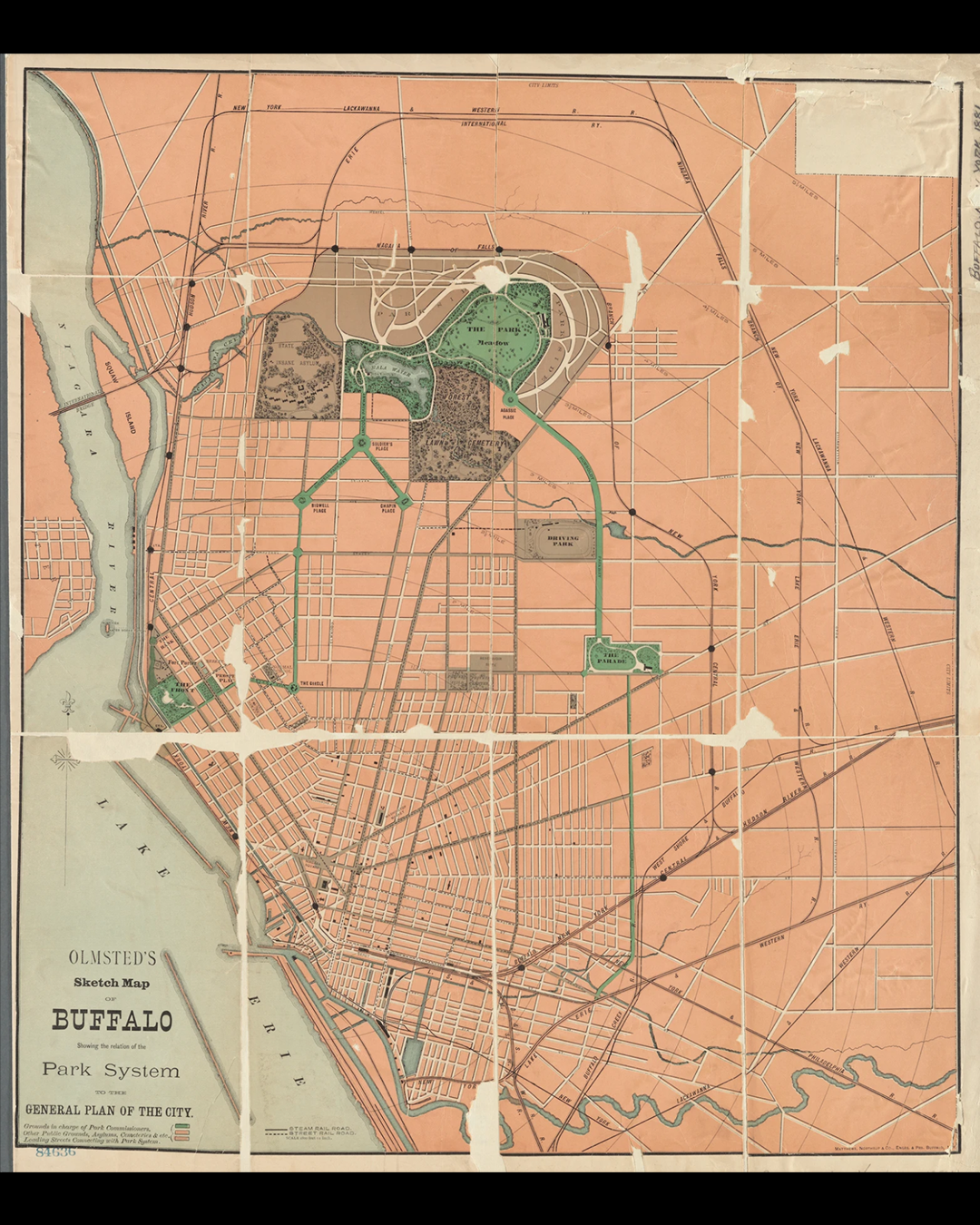BUFFALO: HUMBOLDT PARKWAY/KENSINGTON EXPRESSWAY
“Buffalo is the best planned city in the United States—if not in the world. It is a democratic and egalitarian city.” These are the words of patrician architect Frederick Law Olmsted, the designer of Central Park in NYC and the park system of Buffalo (so this quote is perhaps a bit self-serving). Indeed, the park system Olmsted designed for Buffalo was magnificent. A contiguous series of parks and tree-lined parkways, the system formed an “emerald necklace” of parkland around the city’s core. A key component of this green loop was the Humboldt Parkway, which connected the city’s two largest parks via a wide, tree-lined boulevard.
When the freeway planners came, the Humboldt Parkway was low hanging fruit. The neighborhood it passed through contained many affluent African-American families and businesses. The parkway was entirely destroyed, replaced with the Kensington Expressway. What was once an emerald necklace had become a concrete divider.
The Humboldt Parkway before its destruction by the Kensington Expressway
The expressway never carried the amount of cars it was designed for, underperforming what was expected. From the @congressforthenewurbanism, “In 1950, Buffalo was the 15th largest city in the United States and Hamlin Park, the neighborhood that would be targeted by the future Kensington Expressway, was considered one of its most stable neighborhoods. Decades earlier, it had been developed specifically as an inner-city suburb, with tree-lined streets marketed to upwardly mobile, middle-class German immigrants.
But in the 1950s, a combination of events reshaped the neighborhood. Black professionals and their families, seeking the same middle-class quality of life, started purchasing homes in Hamlin Park. Real estate agents, preying on racially-charged fears, ushered in an era of white flight and drained Hamlin Park of the political capital needed to fight the highway. In the end, the expressway deprived the Black Hamlin Park residents of the benefits of Olmsted’s Humboldt Parkway, instead leaving in its place a legacy of vehicle pollution, homes with depreciated value, and severed connections from other parts of the city.”
By the late 1960s only a small portion of Buffalo's Humboldt Parkway remained. By the '70s it was gone. What was once a tree-lined boulevard providing circulation and open-space for the increasingly African-American neighborhood of Hamlin Park is now a 100'-wide trench forming a gash through the community.
Frederick Law Olmsted’s plan for Buffalo



